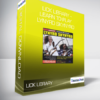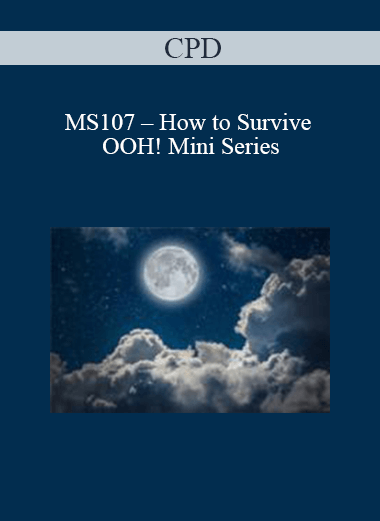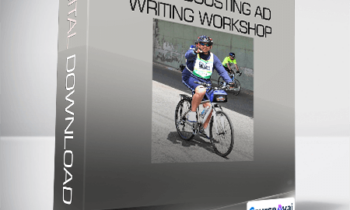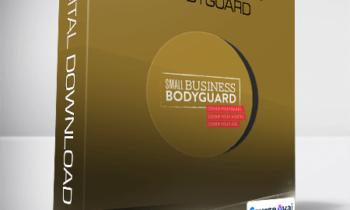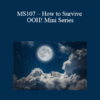$479.00 Original price was: $479.00.$114.00Current price is: $114.00.
 Purchase this course you will earn 114 Points worth of $11.40
Purchase this course you will earn 114 Points worth of $11.40Elevate your skills with the CPD – MS107 – How to Survive OOH! Mini Series course, available for just $479.00 Original price was: $479.00.$114.00Current price is: $114.00. on Utralist.com! Browse our curated selection of over 60,000 downloadable digital courses across diverse Everything Else. Benefit from expert-led, self-paced instruction and save over 80%. Start learning smarter today!
Purchase CPD – MS107 – How to Survive OOH! Mini Series courses at here with PRICE $479 $114

MS107 – How to Survive OOH! Mini Series
£347.00 (+VAT)
12 months access to recordings and course materials is included. Please note that these are webinar recordings and not live events. Full details on how to access the Mini Series will be emailed to you.
- Join Shailen Jasani MA VetMB MRCVS DipACVECC for three 2-hour online sessions and get practical help surviving those out of hours calls!
- Packed with strategic tips and expert advice
- Comprehensive notes to downloaded
- Self-assessment quizzes to ‘release’ your 8 hours CPD certification (don’t worry, you can take them more than once if you don’t quite hit the mark first time)
- A whole year’s access to recorded sessions for reviewing key points!
- Superb value for money – learn without travelling
- Watch the recordings on your iPad!
Programme
General Approach to the Emergency Patient and Practical OOH Survival Tips
Emergency medicine is built on a foundation of core principles and requires a different philosophy and approach to elective practice. The first session in this Mini Series will begin with an overview of the general approach to the emergency patient. But wait…surviving Out-of-Hours (OOH) is not just about the medical and surgical challenges! There are a host of practical things to consider as well and we will look at some of these in the second half of this session.
What you’ll learn:
- General approach to the emergency patient
- Triage, major body systems (primary survey), analgesia, secondary survey, POCUS
- Strategic tips and practical considerations about things such as sleep, diet and delegation all provided by your peers!
Top Priorities in All Emergency Patients: Shock, Fluid Therapy and Analgesia
Many patients that present as OOH emergencies have perfusion deficits and may be in shock. Hypovolaemia is the most common cause of shock in dogs and cats and can be rapidly fatal if left untreated. Dehydration is also common in veterinary patients but is less urgent and assessed and treated differently. This session will explain the differences between hypovolaemia and dehydration before going on to look at how both problems are treated with fluid therapy using a different protocol and approach. Many OOH patients present in pain and a significant number then go on to undergo painful procedures. The session will end with a summary of analgesia in the emergency patient.
What you’ll learn:
- Clinical differences between shock and hypovolaemia versus dehydration
- The fluid plan: which fluid(s) and how to use them for reperfusion versus rehydration
- Key considerations for rational analgesia in the emergency patient
Some Common OOH Presentations
In this final session we will look at some of the most common presentations that you may be faced with OOH and discuss a rational approach to them.
What you’ll learn:
- The collapsed dog: rational approach and some common differentials (e.g. haemoabdomen, cardiac disease)
- Rational approach to the blunt trauma cat including thoracic and brain injury
- Approach to neuromuscular intoxication including intravenous lipid emulsion
The price includes all 3 sessions, notes and quiz – 8 hours of CPD
*No traffic jams, accommodation hassles, pet or childcare, rota clashes, locum fees ……….. just great CPD and a valuable ongoing resource.
Purchase CPD – MS107 – How to Survive OOH! Mini Series courses at here with PRICE $479 $114
Cultivate continuous growth with the CPD – MS107 – How to Survive OOH! Mini Series course at Utralist.com! Unlock lifetime access to premium digital content, meticulously designed for both career advancement and personal enrichment.
- Lifetime Access: Enjoy limitless access to your purchased courses.
- Exceptional Value: Benefit from savings up to 80% on high-quality courses.
- Secure Transactions: Your payments are always safe and protected.
- Practical Application: Gain real-world skills applicable to your goals.
- Instant Accessibility: Begin your learning journey immediately after buying.
- Device Compatible: Access your courses seamlessly on any device.
Transform your potential with Utralist.com!
Related products
Everything Else
Jacob Sokol – Quadruple Your Coaching Biz 19 expert sessions
= 43 Points
Everything Else
= 38 Points
Everything Else
= 47 Points
= 89 Points
Everything Else
Craig Garber – Client-Getting Sales-Boosting Ad Writing Workshop
= 142 Points
Everything Else
= 56 Points
Everything Else
= 47 Points
Everything Else
= 43 Points

